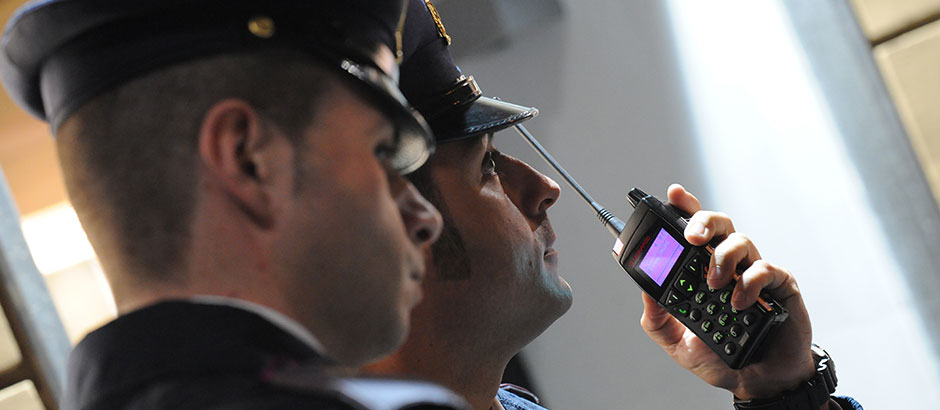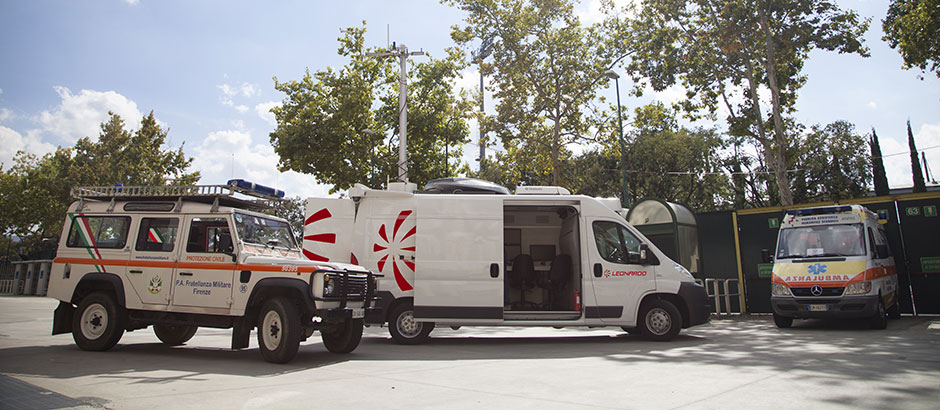Leonardo 14 May 2017

Leonardo boasts over a century of experience in the field of communications for Defence and Security. The company has designed and created secure communication systems that have been used in over 50 countries to protect cities, infrastructures and transport, and to manage emergencies and major international events, such as inter-governmental forums and sporting events including the Olympic Games and large world expositions.
For Leonardo, guaranteeing integrated, secure communication networks means offering its customers a reliable and efficient way of managing information in complex scenarios, such as those concerning public safety and the emergency services, civil protection agencies or transport infrastructures. In this field, the company has become a firm international leader in the supply of solutions based on the TETRA standard.


TETRA technology
The initials TETRA (Terrestrial Trunked Radio) represent a standard for secure, protected professional digital mobile radio communications. Developed for the definition of radio communication systems law enforcement, TETRA also ensures a high level of reliability in emergency conditions, breakdowns or network overloading and enables the activation of a wide range of applications, such as the automatic localisation of the terminals and vehicles on which it is installed. The main characteristics of TETRA are: the simultaneous transmission of voice and data messages ( also in protected mode); and the possibility of making individual, group and general conference calls. TETRA offers a wide selection of very diverse functions from those offered by the public mobile networks, such as GSM and UMTS. Whereas the traditional cellular networks tend to become saturated and cause the system to collapse in situations involving intense traffic, instead TETRA rationalises the voice traffic based on priority indexes, enabling the system to avoid bottlenecks.

From the G7 in Taormina to the Airports in Rome: how TETRA is applied
Leonardo solutions based on TETRA technology have generated many success stories These include Expo Milano 2015, the Winter Olympic Games in Sochi 2014, the Commonwealth Games in Glasgow 2014, the G8 summit in L’Aquila in 2009 and the Winter Olympics in Turin 2006.
Leonardo is currently working on the development of the advanced network for the next G7 summit, in Taormina on 26 and 27 May. The security forces engaged in the international summit of the Heads of State and Government will be able to carry out rapid interventions in case of emergency and ensure the highest standards of protection for the summit area.
In particular, Police Forces can rely on cipher digital communications and a widespread radio coverage covering the entire territory, including the coastal waters and airspace. Approximately 2,000 state-of-the-art radio terminals and multimedia operator workstations will be present in the intergroup security forces operating room. These technological solutions offer an integrated method of managing information and localising the resources in the territory.
The operating room for the G7 summit will also be able to tune into the images captured by an impressive video surveillance system that monitors the Sicilian Region, created and managed by Leonardo, consisting of approximately 1,000 sensors, featured on video cameras and optical registration plate readers. During the summit, as an investment of its own, Leonardo will also provide a sophisticated mobile operating room, which will enable the rapid deployment of TETRA communications integrated with a dedicated broadband network based on LTE technology for the transmission of videos on the move.
The communication network to be created by Leonardo, in collaboration with Telecom Argentina, for the city of Buenos Aires will also be based on the TETRA standard. The new infrastructure will be used by the Policía de la Ciudad de Buenos Aires and will be up and running by the end of 2017. Based on digital IP technology, the new network will cover the metropolitan area of the Argentine capital, which spans a surface area of over 202 square kilometres, and will be integrated with the existing infrastructure currently in use by the Police. The network will also be utilised for the emergency and security services, the metro – the largest in Latin America, carrying over a million passengers per day – and other city transportation systems, constituting a multi-service infrastructure capable of ensuring secure, protected communications. A command and monitoring centre will also be installed in the Police headquarters.
Among its other applications, the TETRA digital radio system supplied by Leonardo guarantees the security of the communications of the operators working at the “Leonardo da Vinci” airport in Rome Fiumicino (Italy). The system enables information to be exchanged between various units of the single operating sectors and ensures that the operations are coordinated, by consolidating the use of TETRA technology to guarantee secure, reliable communications between airport ground operators. Wide radio coverage has been guaranteed throughout the area involved, both inside and outside buildings. This allows excellent performances and high security levels to be maintained even when public cellular networks could be subject to congestion or be unavailable, something that could occur in emergency situations.

From TETRA technology to broadband infrastructures

The growing need for multimedia content and data is also determining a greater requirement for broadband technologies in the public safety field. Leonardo is capable of supplying 4G LTE (Long Term Evolution) solutions, and is actively participating, both as technology provider and systems integrator, in the analysis of the scenarios designed to develop 5G technology (fifth generation networks). Leonardo can create professional voice and multimedia services not tied to a particular access network using the CSP (Communications Service Platform), and will therefore be able to support the evolution of these services on 4G and, in the future, 5G networks.
Leonardo also supplies end-user devices in the public safety field: the portable Puma T4 terminal combines the characteristics of a multimedia smartphone with the sturdiness and user-friendliness of a portable PMR (Professional Mobile Radio) in a single device. Puma T4 is available in the TETRA, LTE and dual-mode TETRA/LTE versions, effectively adapting itself to the evolution of the scenarios in the public safety field.
The sector organisations, such as the 3GPP (Third Generation Partnership Project) and the ETSI (European Telecommunications Standards Institute) are actively striving to standardise the characteristics required to ensure the effective implementation of LTE and subsequent generations of broadband networks by the bodies responsible for public safety, especially in emergency situations.
There is also a growing interest in the possibility of virtualising networks and infrastructures based on cloud platforms. The model for the public safety networks of tomorrow and the use of hybrid public/private infrastructures are some of the main topics of public interest due to their implications for security, monitoring and economies of scale.
Although the broadband technologies are reaching a level of maturity, it will still take time before infrastructures and devices capable of supporting all the relative characteristics become effectively available. In the meantime, the public safety network is evolving towards the gradual introduction of new characteristics, obtained by combining the current narrow band infrastructures with LTE networks and 5G networks in the future. The integration of narrow band and broadband is essential for guaranteeing network efficiency during this transition period. Dual mode devices (narrow band-broadband) are another piece of the puzzle designed to ensure easy access to the resources of an optimum network, guaranteeing its effective operation.

